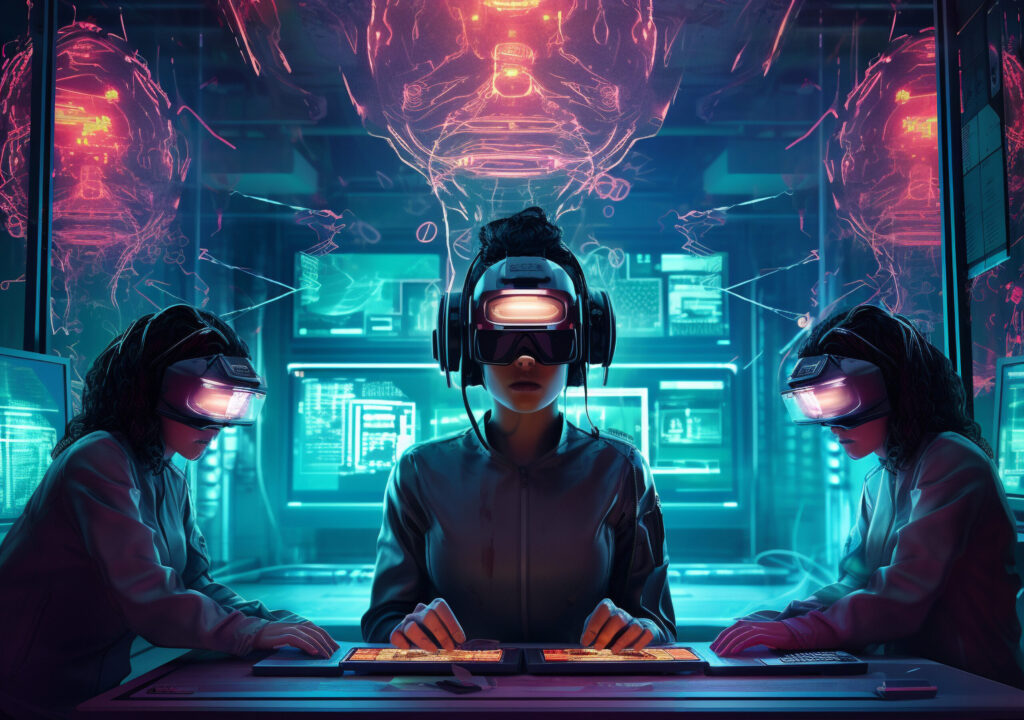Technology is growing fast, and one of the hottest topics today is Artificial General Intelligence (AGI). But what exactly is it? Why is everyone talking about it? And how is it different from the AI we already use everyday? Let’s explore the exciting world of AG in simple words.
What is Artificial General Intelligence (AGI)?
Artificial General Intelligence (AGI) refers to a type of AI that can understand, learn, and perform any task that a human being can do. Unlike current AI tools that are trained for specific jobs, AGI would have the ability to think, reason, and make the decisions like a real person.
Think of it this way: today’s AI is like a student who is really good at math but doesn’t know anything about the history. But Artificial General Intelligence (AGI) would be like a student who can learn any subject, just like humans do.
AGI Predictions: When will AGI Arrive?
Expert all over the world are making AGI Predictions, but nobody knows the exact data when Artificial General Intelligence (AGI) will become real. Some scientists believe it could happen in the next 10 to 20 years. Others think it might take even longer. AGI Predictions is always right.
Big companies like Google DeepMind, OpenAI, and Microsoft are working hard to build Artificial General Intelligence (AGI). They believe it could change the world forever. However, some people worry that if we are not careful, Artificial General Intelligence (AGI) could become dangerous. That’s why many tech leaders say we must develop it responsibly. AGI Predictions is very useful.
AGI Examples: What Could AGI Do?
Let’s look at some AGI Examples to understand how it could be useful in real life:
- Healthcare: Imagine an AGI systems that can study all medical knowledge and help the doctors diagnose rare diseases in seconds.
- Education: AGI could act as a personal tutor that knows every subject and adjusts to each student’s learning style.
- Robotics: Robots powered by AGI could clean your house, cook your food, and even take care of the elderly.
- Space Exploration: AGI could help the astronauts by managing the complex systems on spacecrafts and solving the problems quickly.
These are just a few AGI Examples, but the possibilities are endless. The AGI Examples are very nice.
AGI vs Narrow AI: What’s the Difference?
One of the most common questions is: AGI vs Narrow AI – what’s the basic difference between both of them?
- Narrow AI (also called as Weak AI) is the type of AI we used today. It is designed for a specific task like recognizing the faces, translating the languages, or recommending movies. Siri, Alexa and Google Maps are the examples of Narrow AI.
- AGI, on the other hand can do anything that a human can do with very ease. It doesn’t need to be trained or setup after every task, as it learns and improves itself.
So in the battle of AGI vs Narrow AI, it’s like comparing a elephant with a ant. Both are useful, but one is much more powerful.
What is AGI vs AI: Clearing the Confusion
Many people are confused between AGI and AI, but they are totally different from each other. So let’s answer the question. What is AGI vs AI
- AI is the broad term for the machines that can perform tasks using the intelligence. This includes both the Narrow AI and the AGI
- AGI is a specific type of AI – one that can think and act like a human.
You can think of AI as a big tree. Narrow AI is one branch, and AGI is another. While Narrow AI is already part of our lives, AGI is still being developed.
So when people ask, What’s AGI vs AI, you can tell them: “AI is the bigger concept. AGI is the dream of making the machines as smart as humans.”
Is ChatGPT AGI?
One popular questions that many people ask is: ChatGPT is AGI?
The answer is NO. While ChatGPT is an advanced AI chatbot, it is still an example of Narrow AI. It can generate the text, answer questions, and even help with writing, but it doesn’t truly “understand” the way humans do.
ChatGPT cannot learn the new things on it’s own or apply its knowledge to completely different tasks unless it has been trained to do so. That’s why its not AGI.
So when someone wonders, ChatGPT is AGI, you can explain: “It’s smart, but it’s not yet human-level smart.”
Why, Should We Care About AGI?
The arrival of Artificial General Intelligence (AGI) could bring the major changes in every field – education, healthcare, business and more. It could help us solve the global problems like climate change, poverty, and disease.
But at the same time, Artificial General Intelligence (AGI) could also create new risks. What if machines become too powerful? What if they start making decisions without human control? These are the questions that scientists and ethicists are already thinking about.
That’s why it’s important for all of us to understand Artificial General Intelligence (AGI), not just engineers and researchers. After all, it could become a part of our everyday lives in the near future.
Conclusion: The Road of AGI
To sum it all up:
- Artificial General Intelligence (AGI) is the dream of building the machines that can think and learn like humans.
- AGI Predictions say it might happen in the next few decades.
- AGI Examples show how it could change the fields like health, education, and space.
- In the debate of AGI vs Narrow AI, AGI is more powerful and flexible.
- If you’re confused about What is AGI vs AI, just remember. AGI is a type of AI that can do anything a human can.
- And finally, if you’re wondering Is ChatGPT AGI, the answer is no – for now.
As we move into the future, the line between the humans and machines may blur. The more we learn about AGI, the more we can prepare for a world where humans and intelligent machines work together.
If you liked this blog and want to read more Blogs related to AI than you can read only on AiOnlineMoney.



